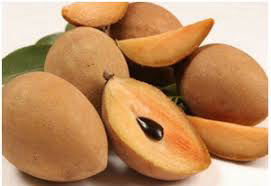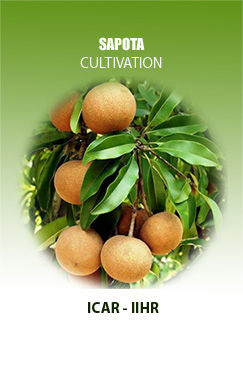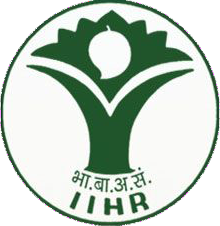
Crop Production
Sapota commonly known as “chiku” is an important fruit crop in India. Sapota flowers throughout the year in tropical condition with two main seasons; July to November and February to March. Inside, its flesh ranges from a pale yellow to an earthy brown colour. The fruit may be seedless or may have 3-5 black shinning seeds. It is an evergreen tree.
Soil and climate: Sapota is a hardy tree that can be grown on a wide range of soils – sandy loam, red laterite and medium black that are well drained, deep and porous. It can be grown from sea level up to 1200m above MSL in dry and humid areas where temperature ranges between 110C - 340C. It prefers a warm and moist weather and coastal climate seems to be best suited.

